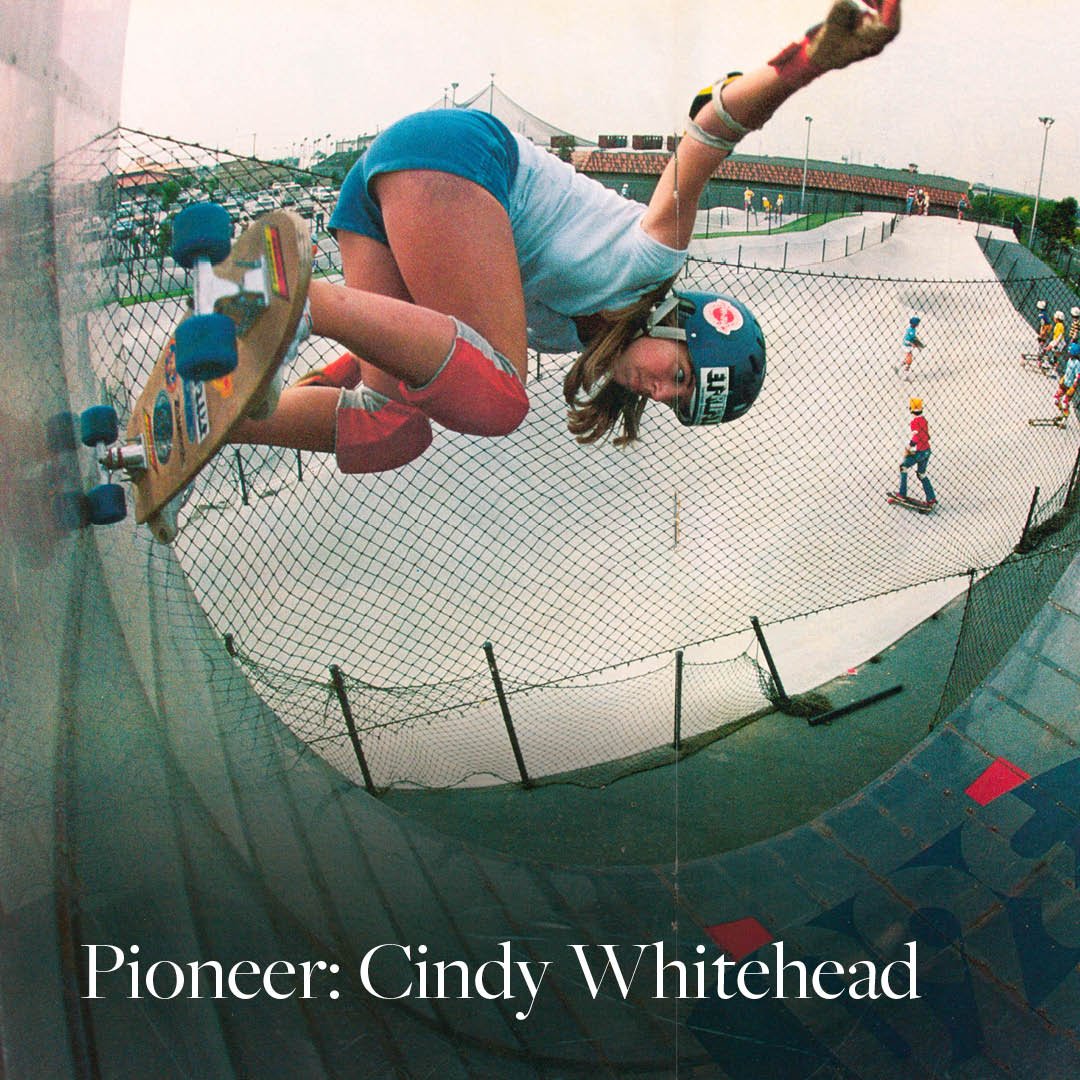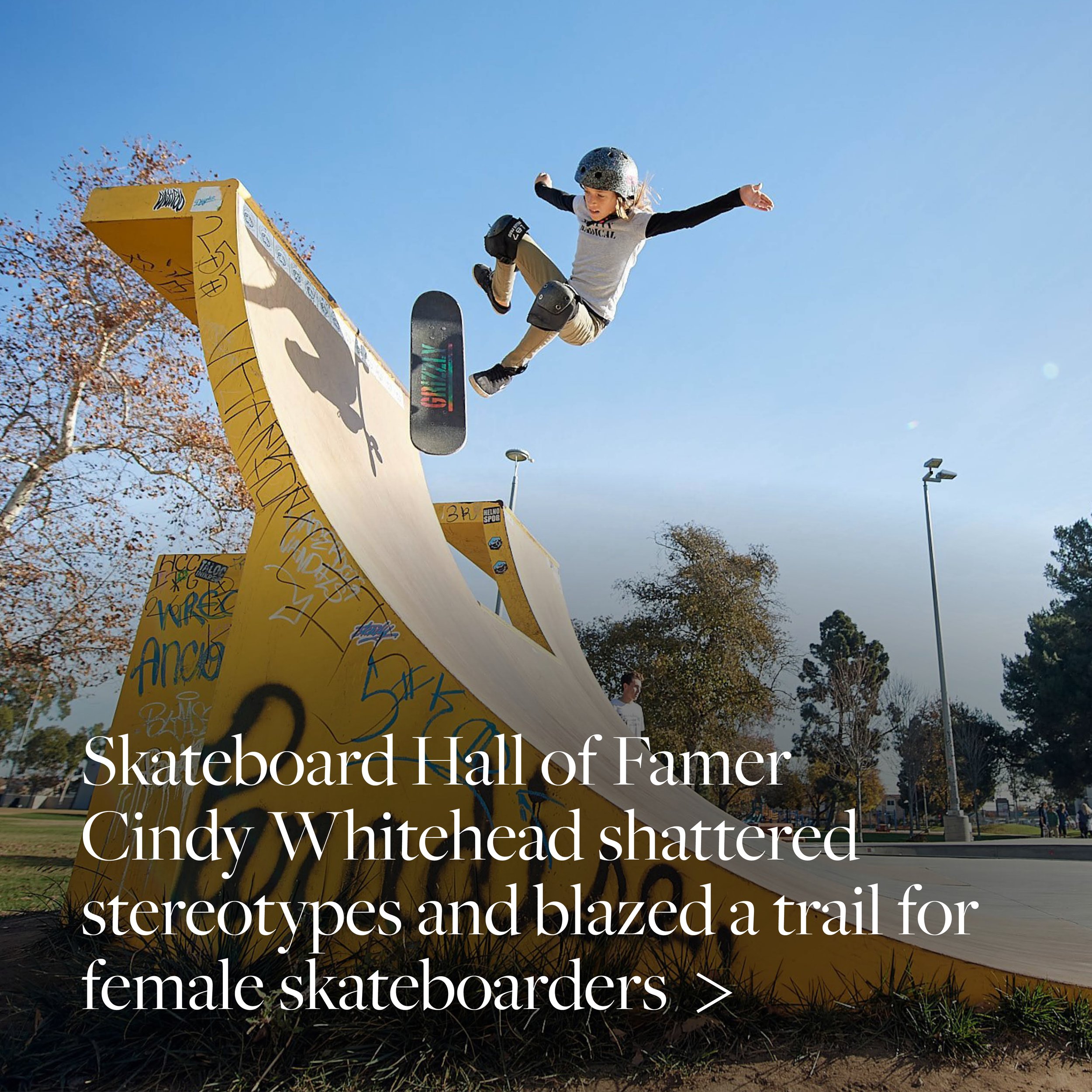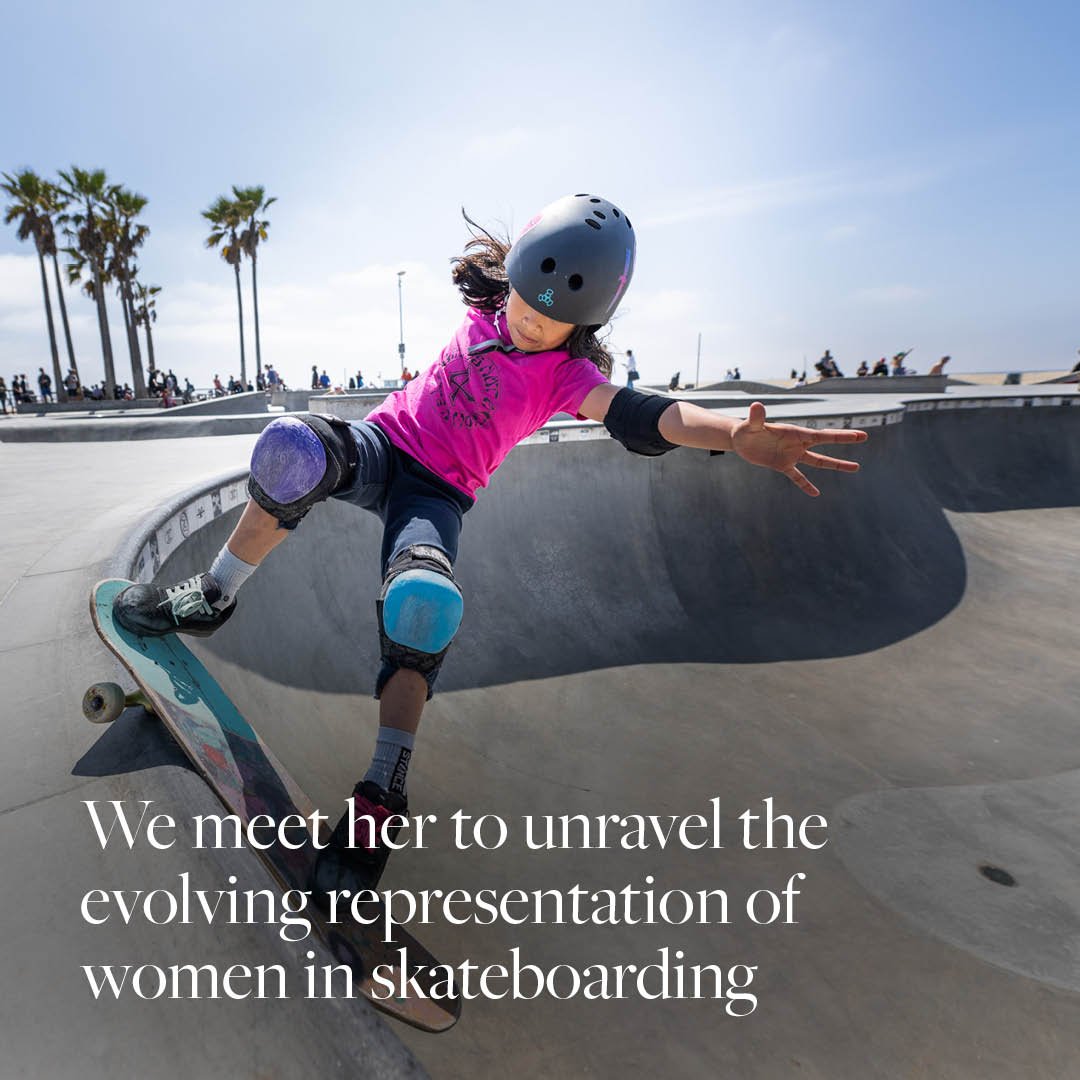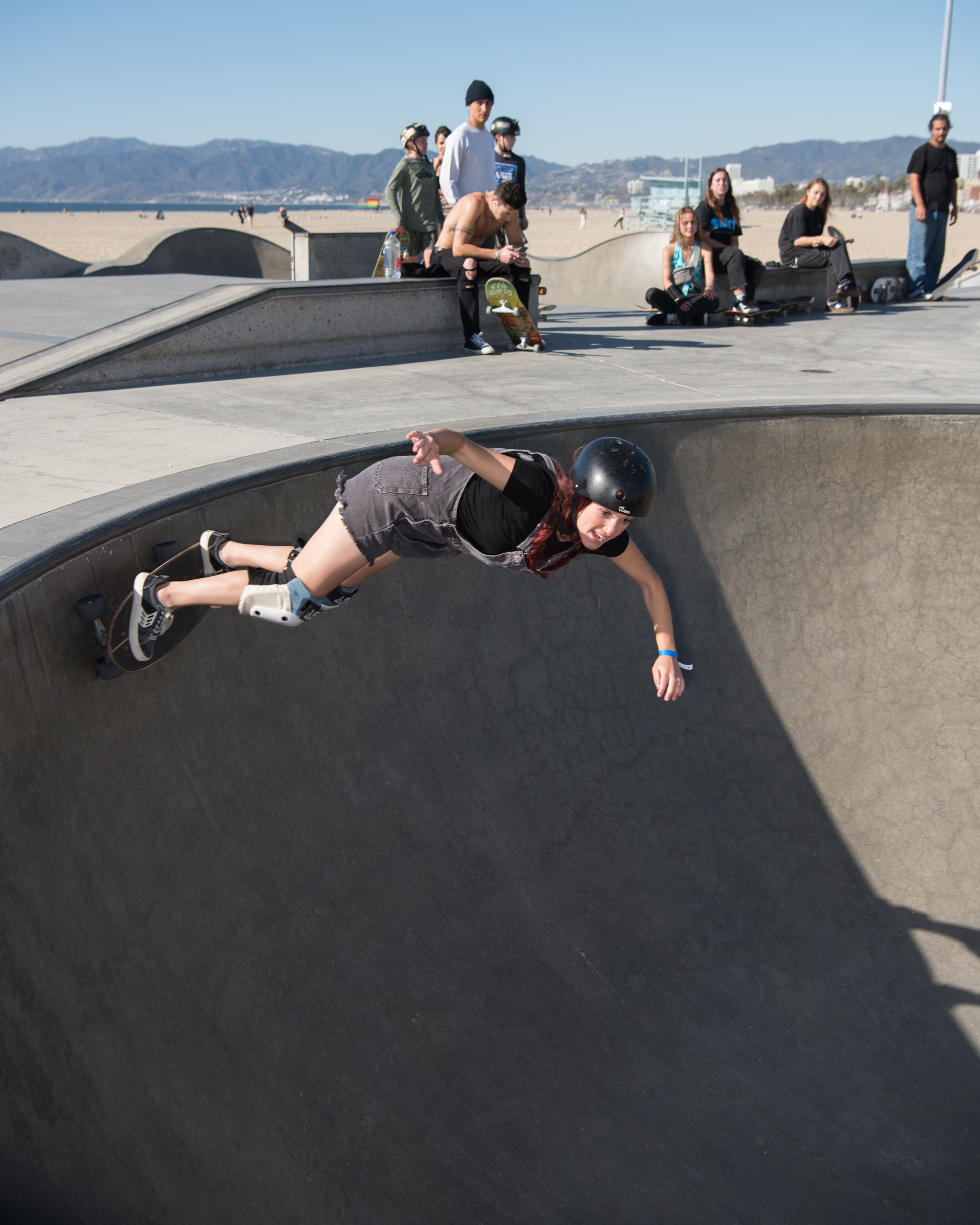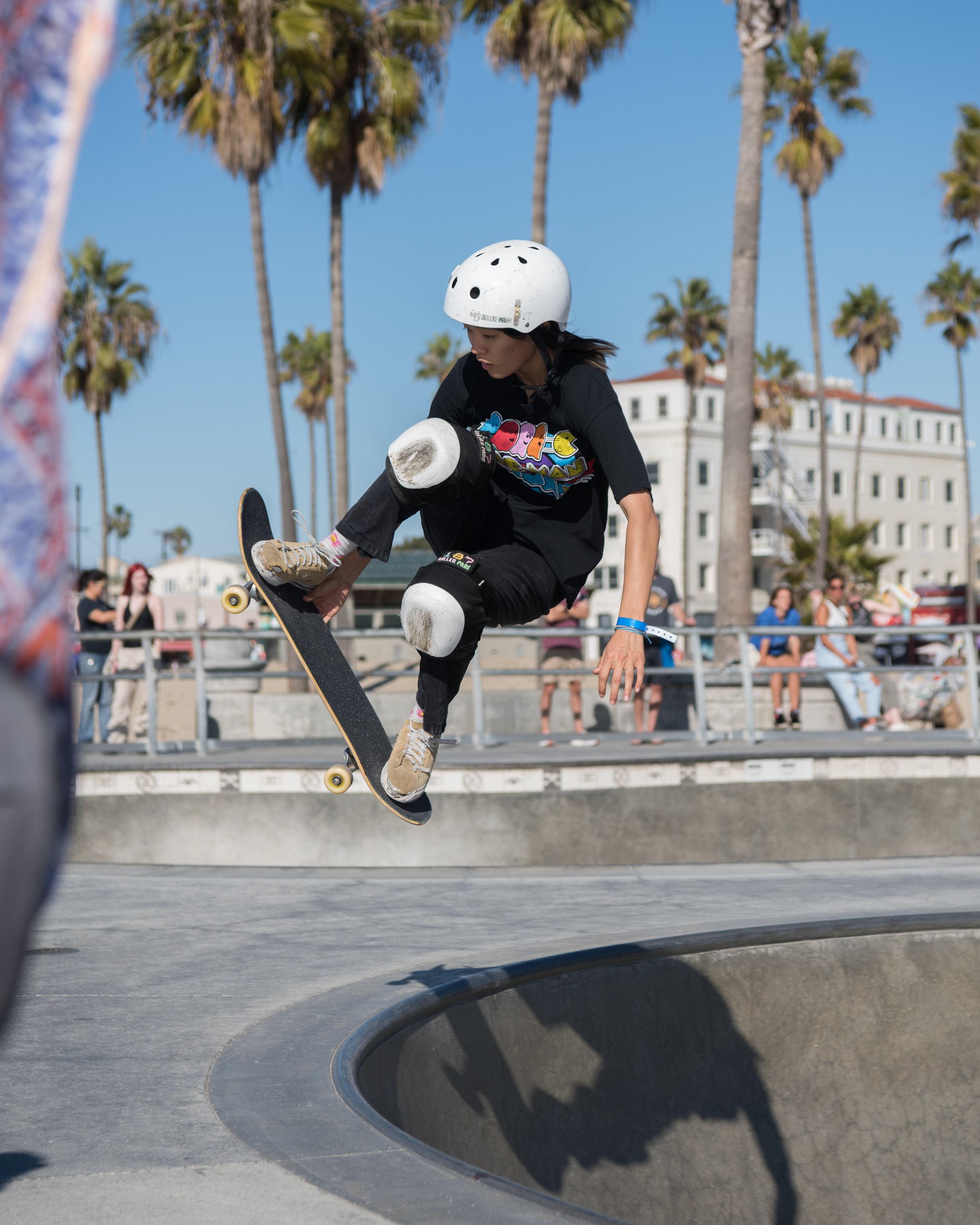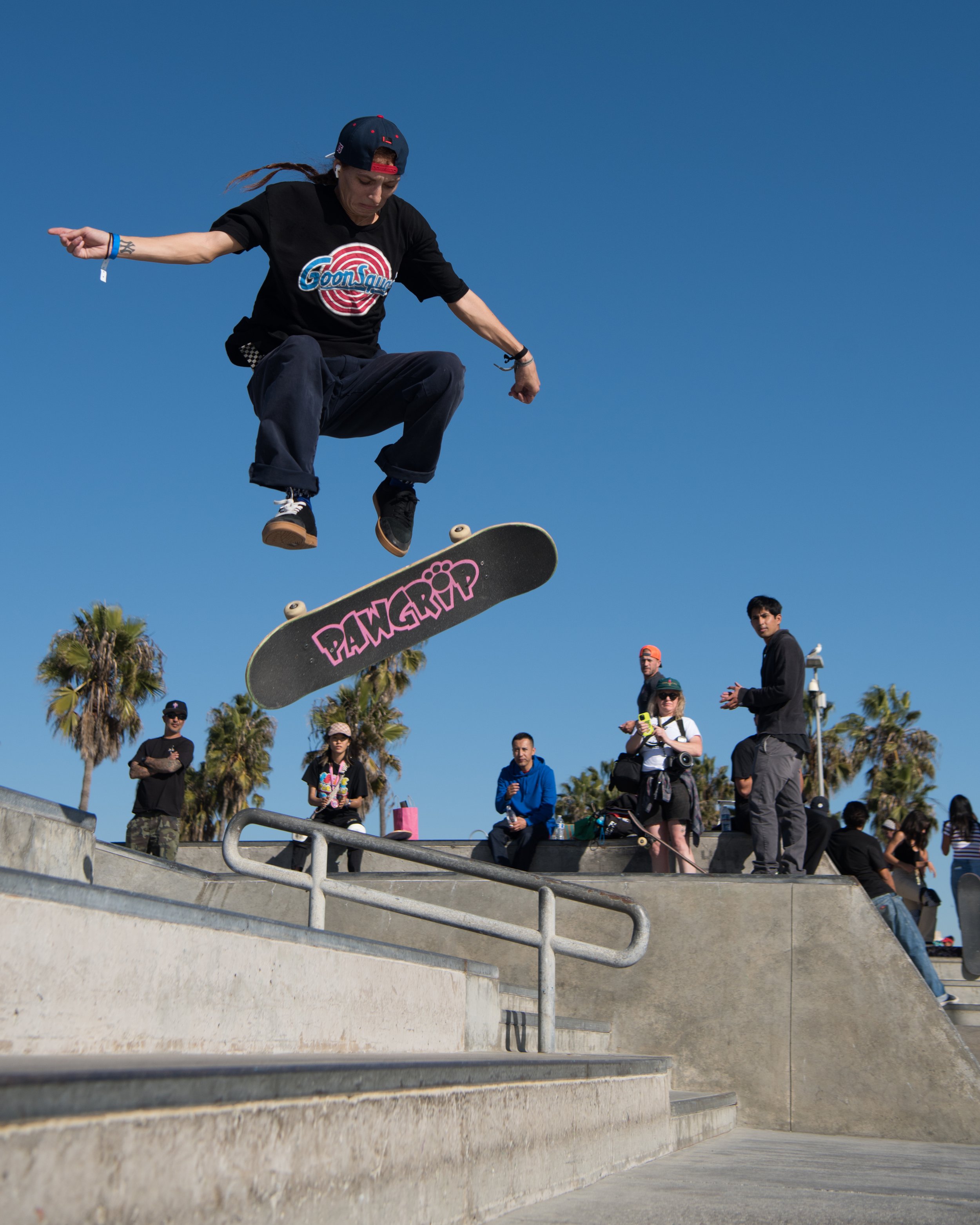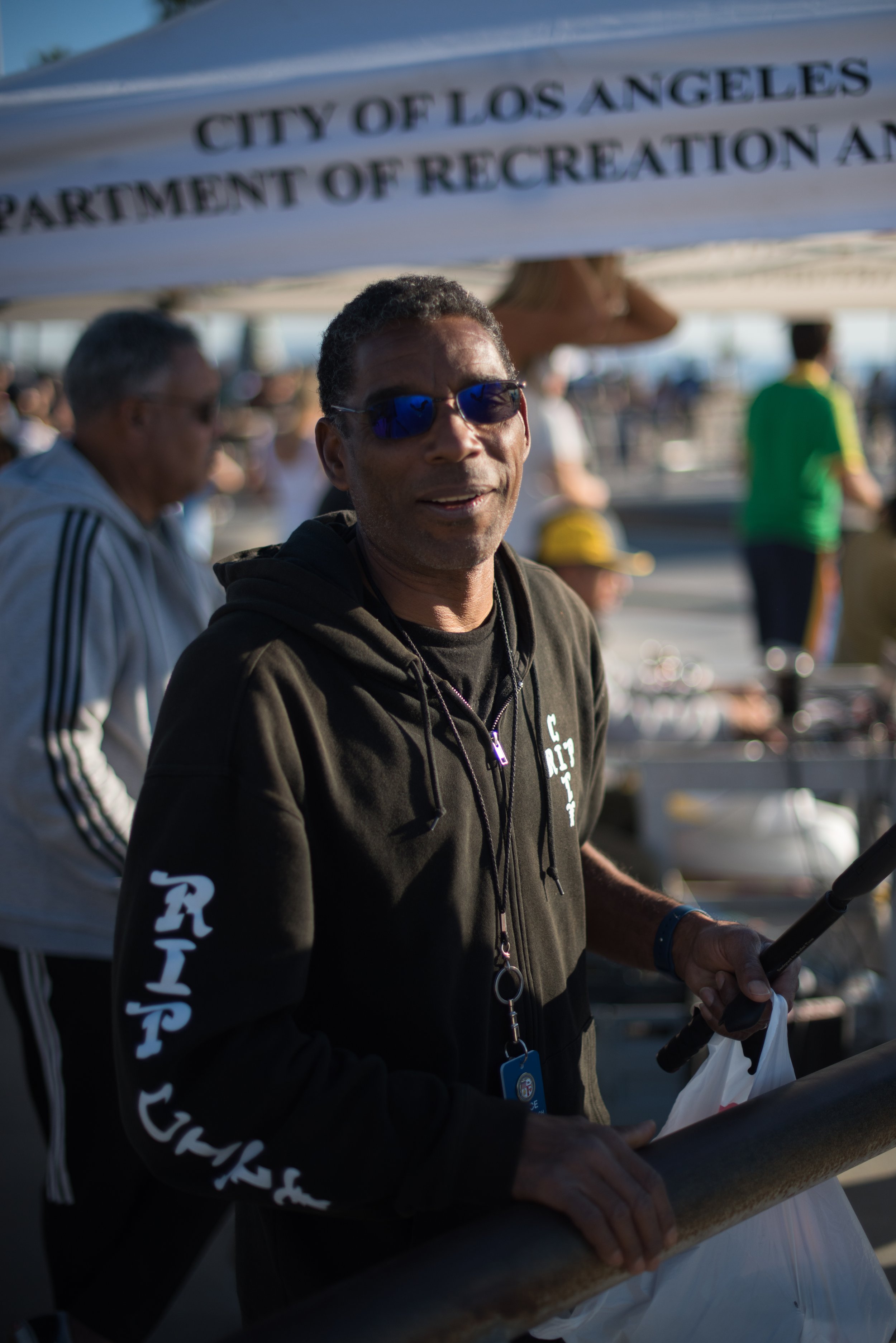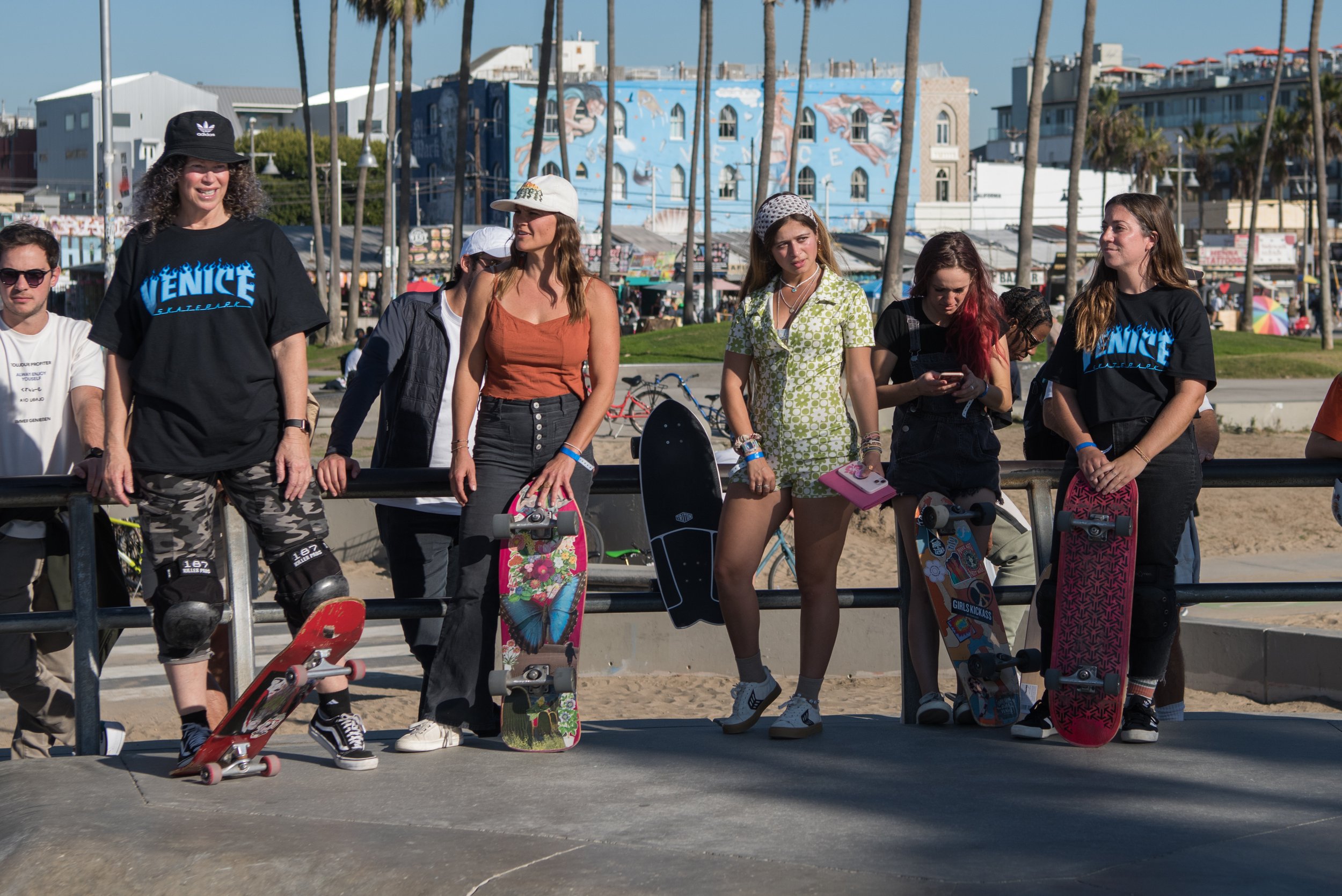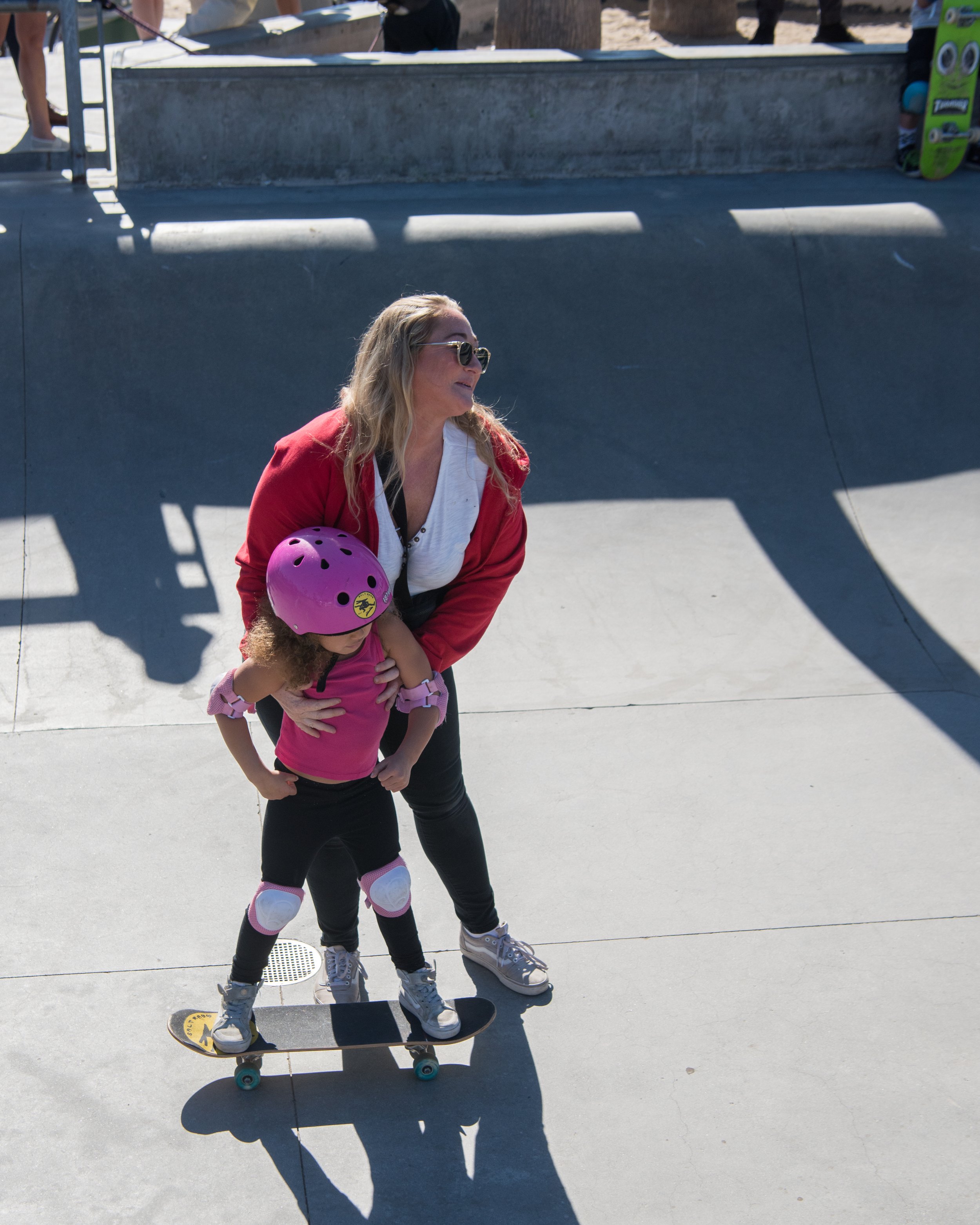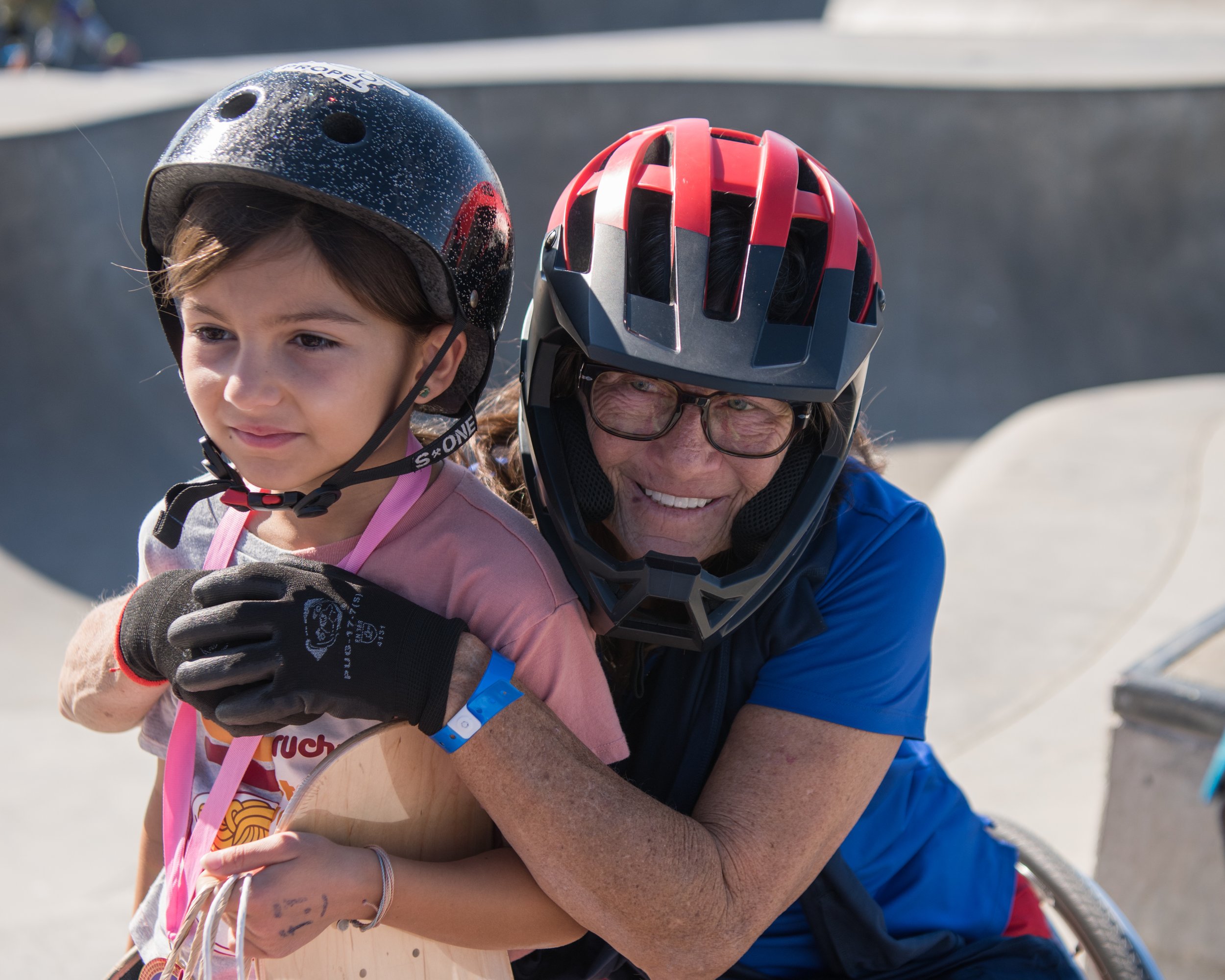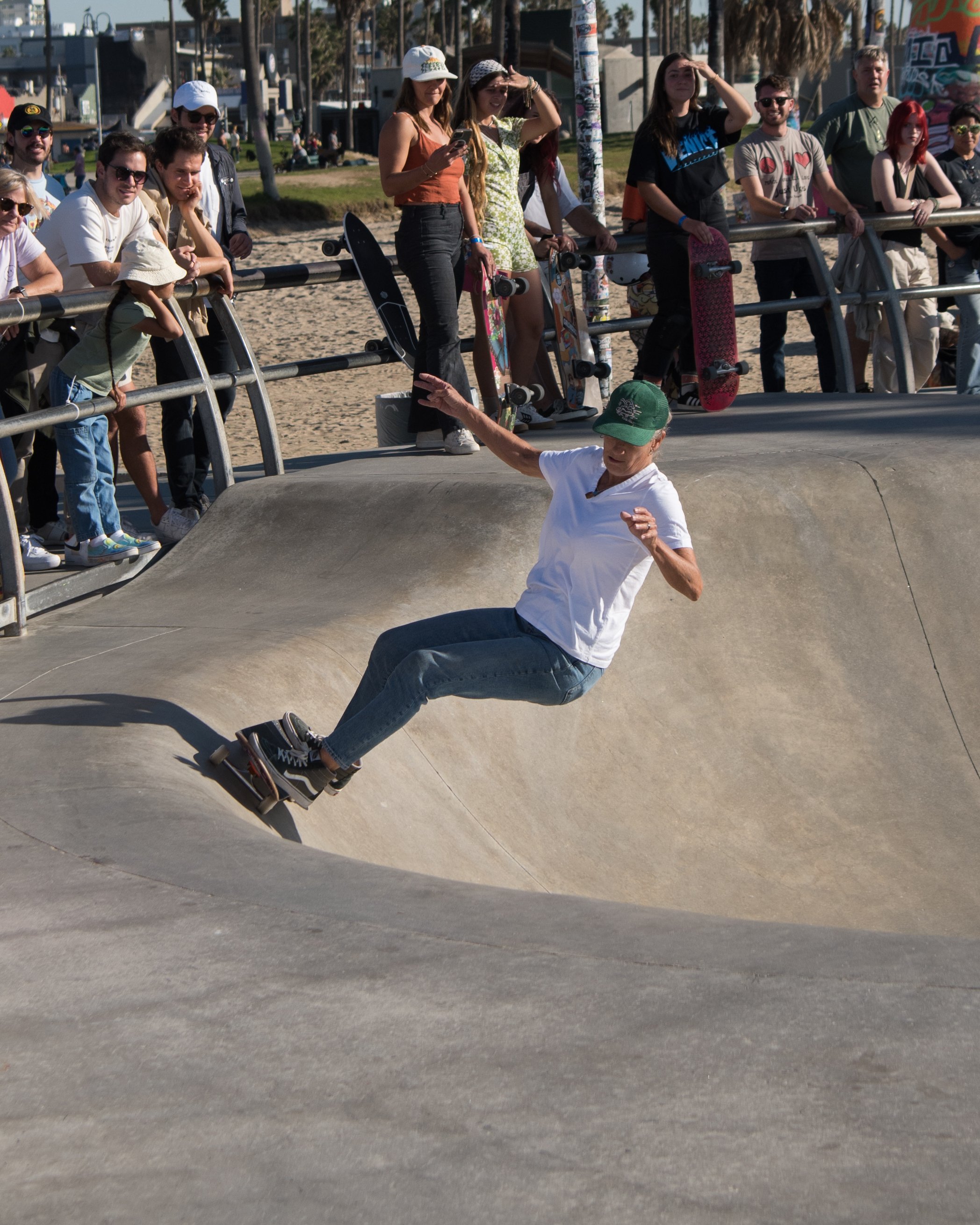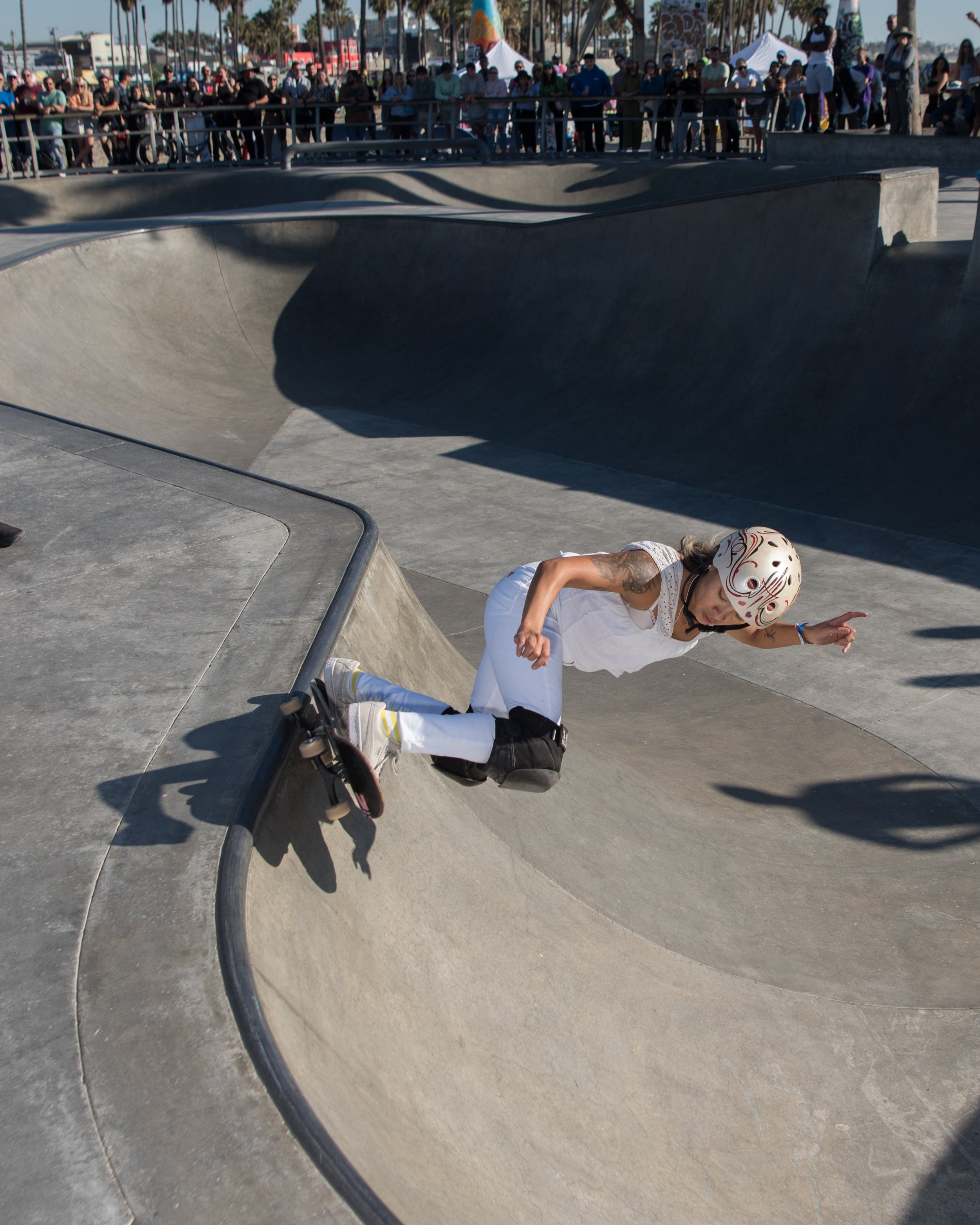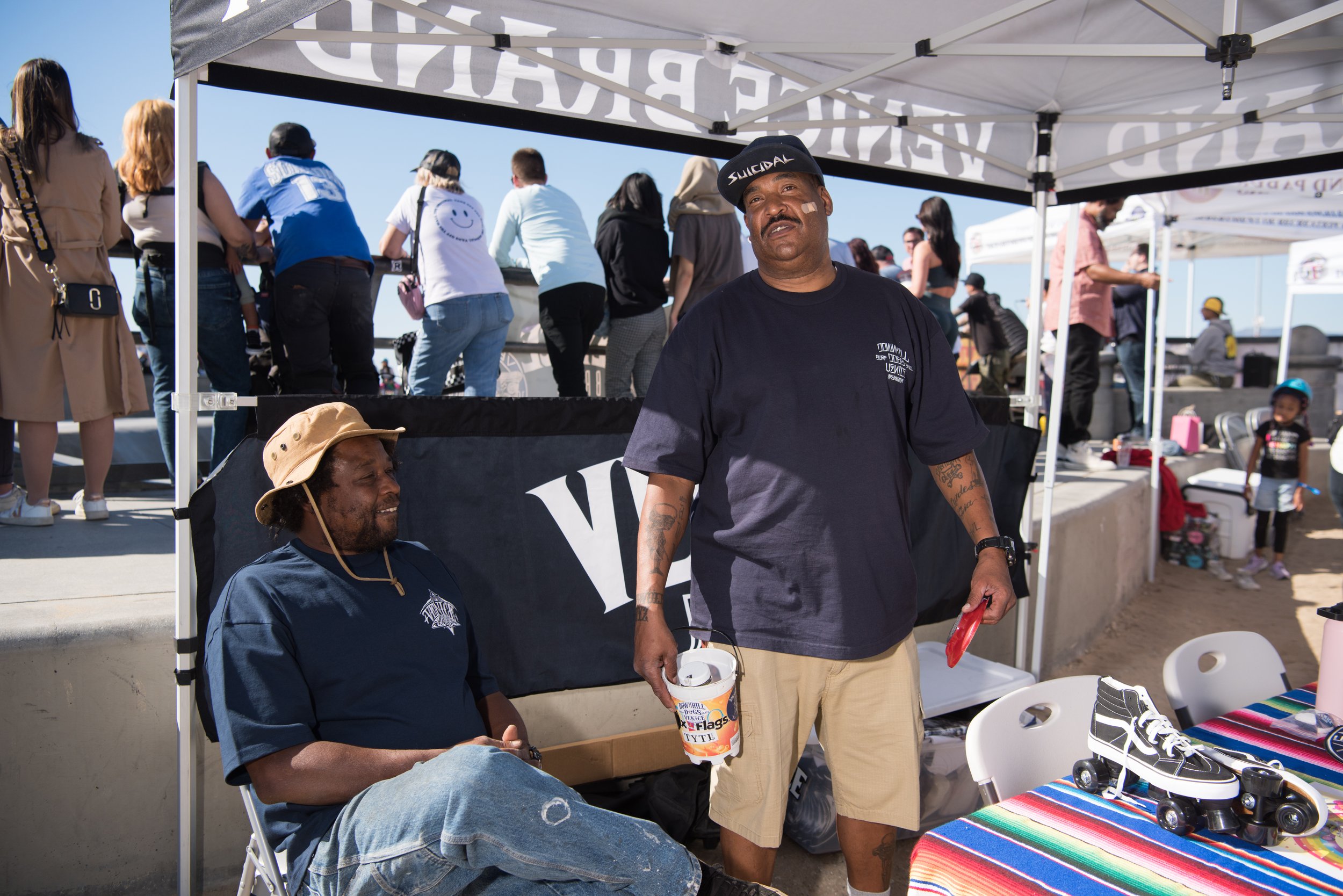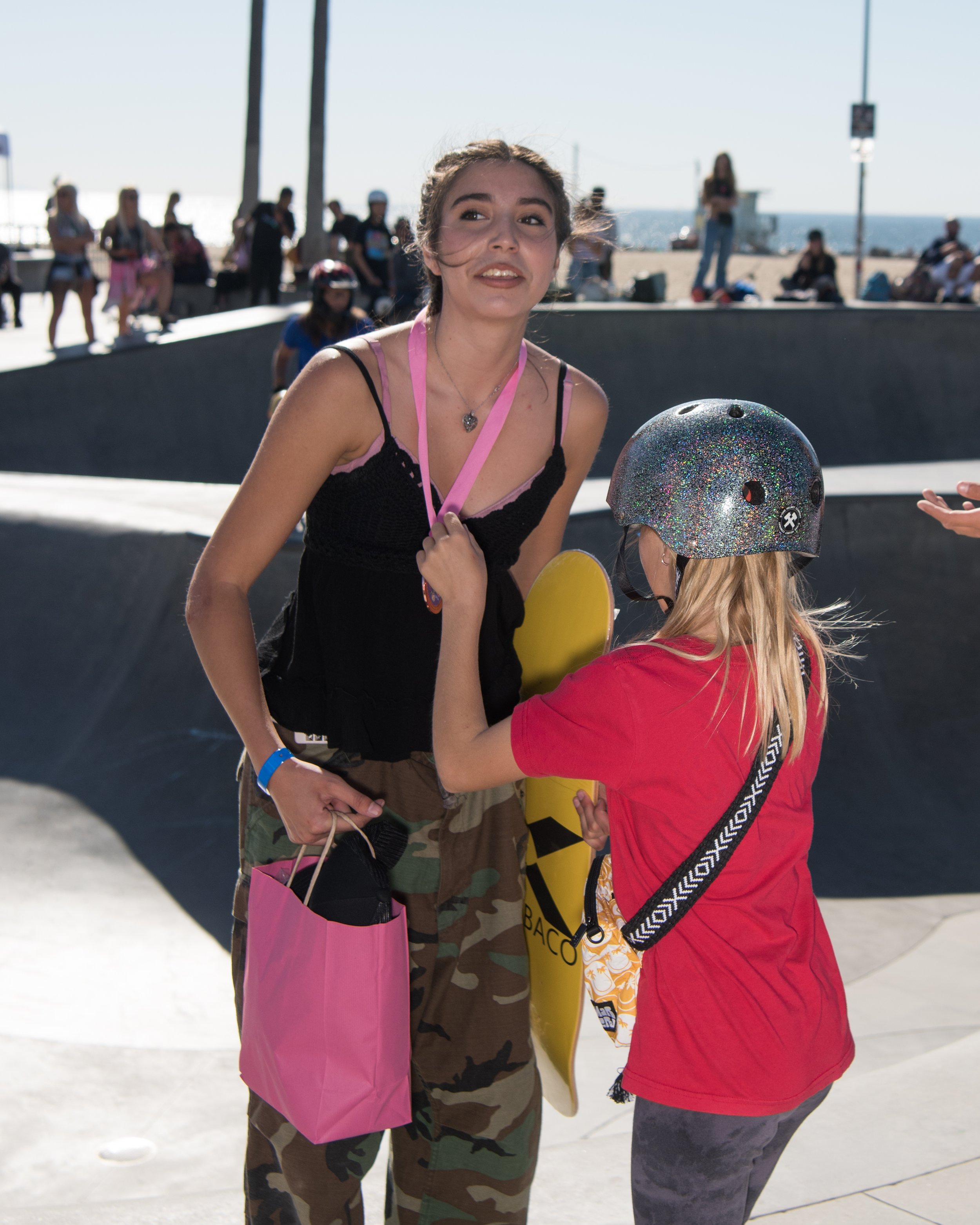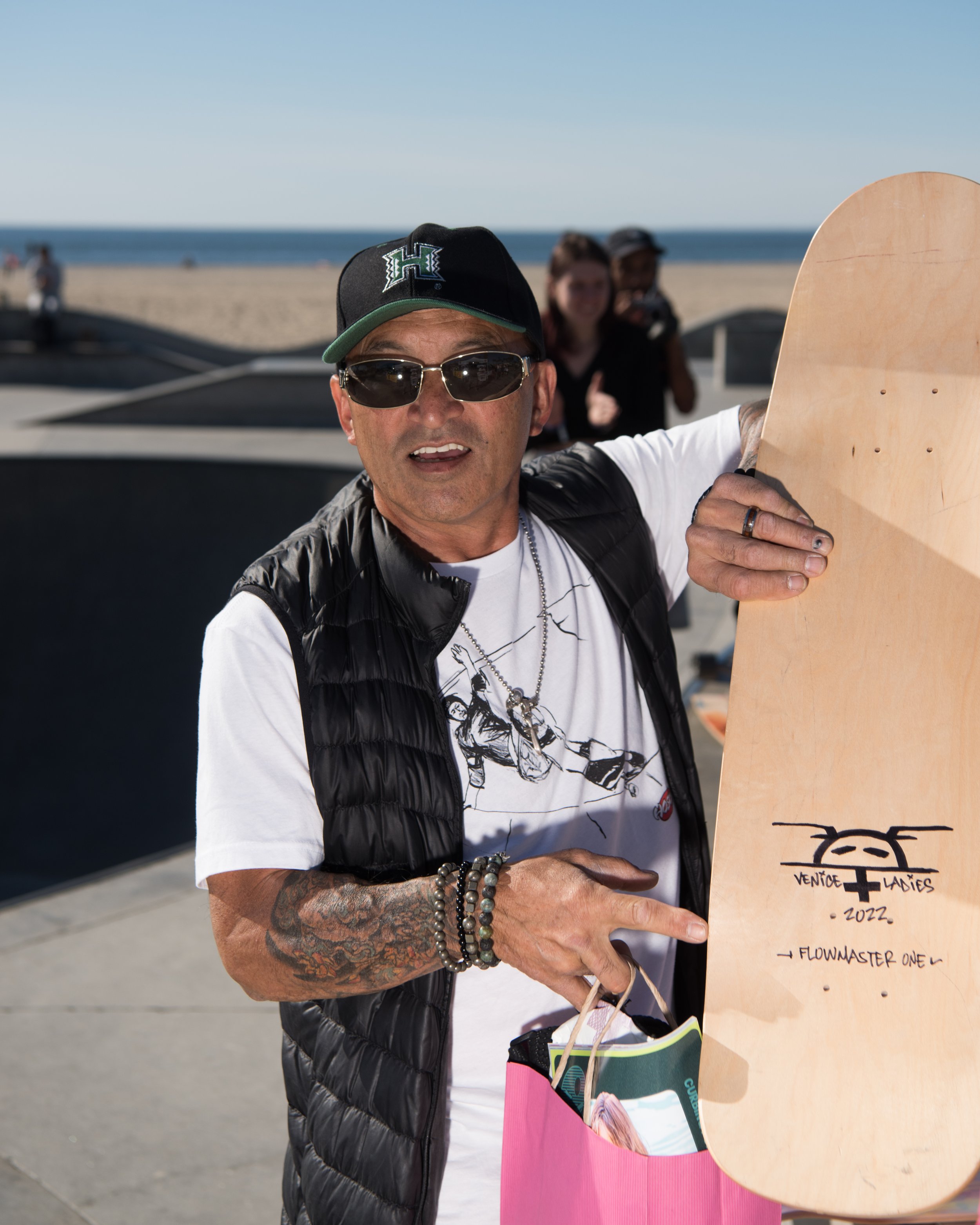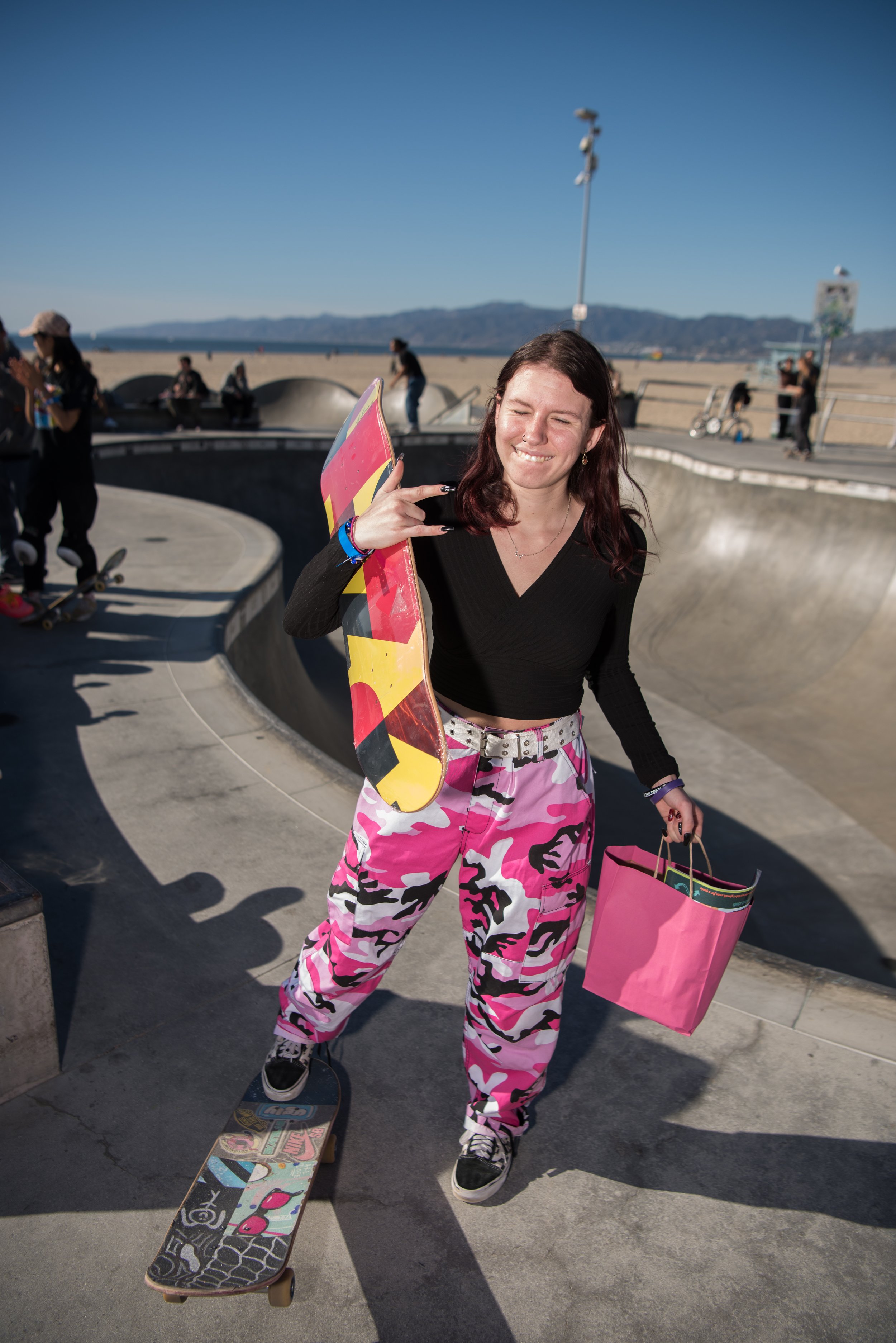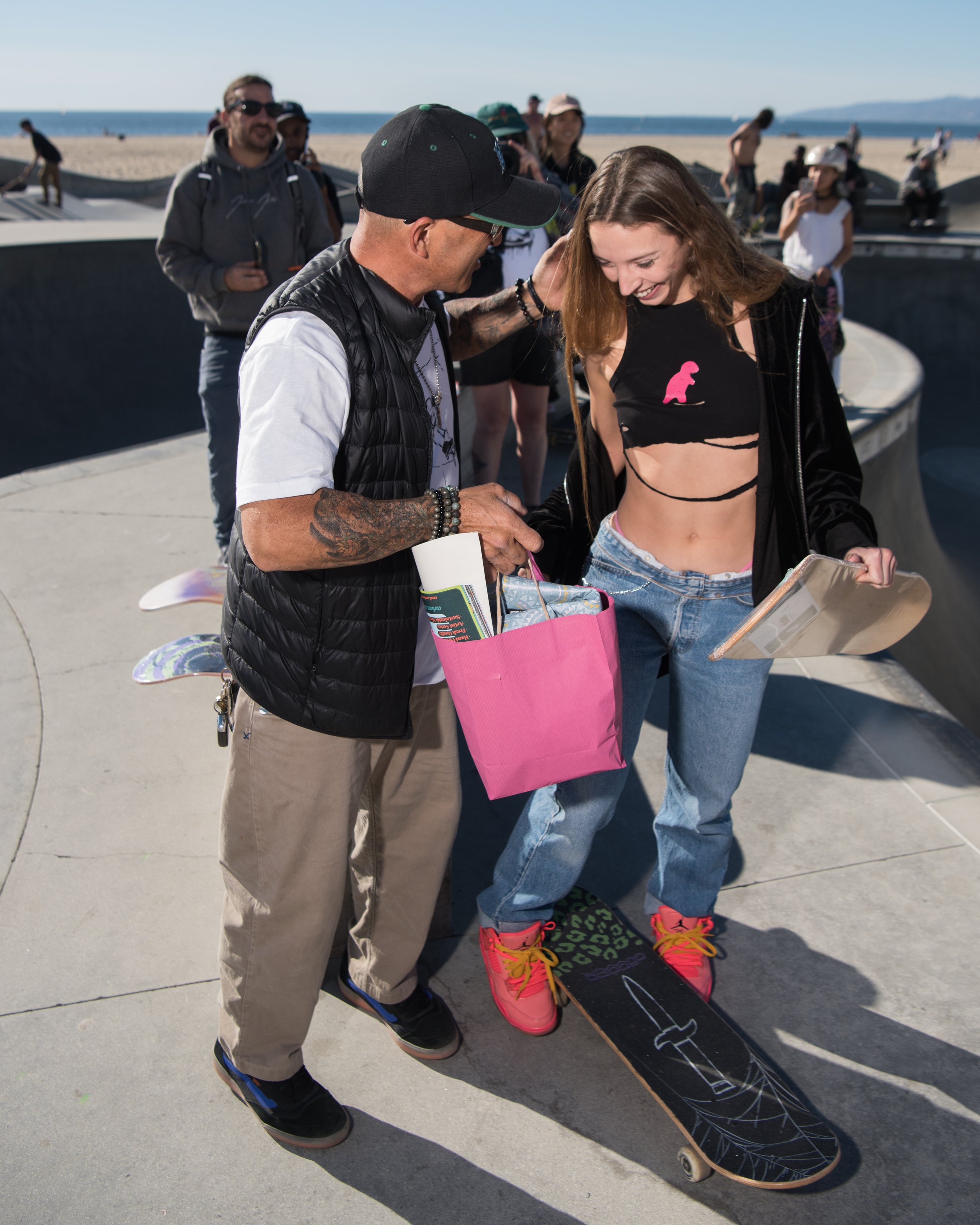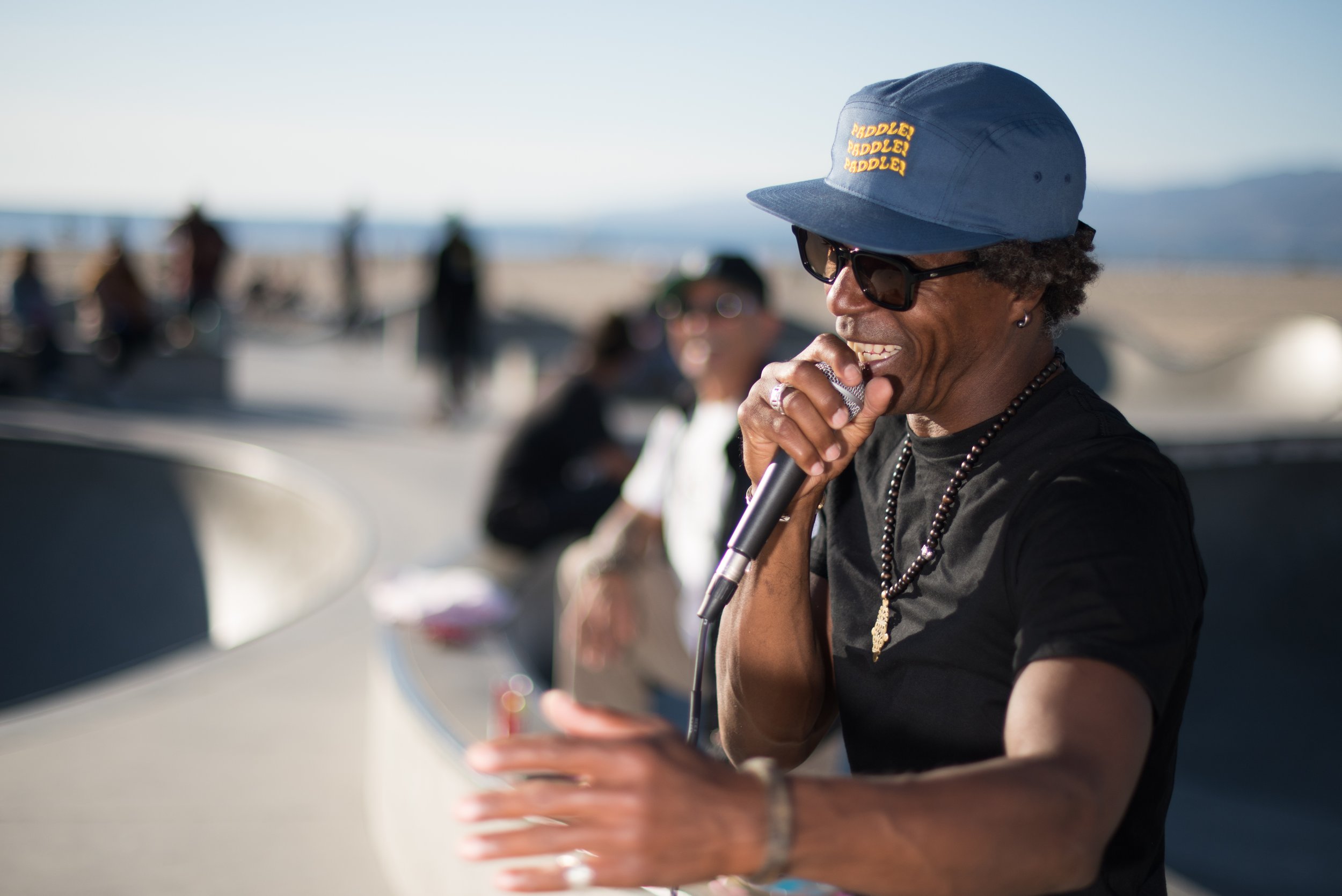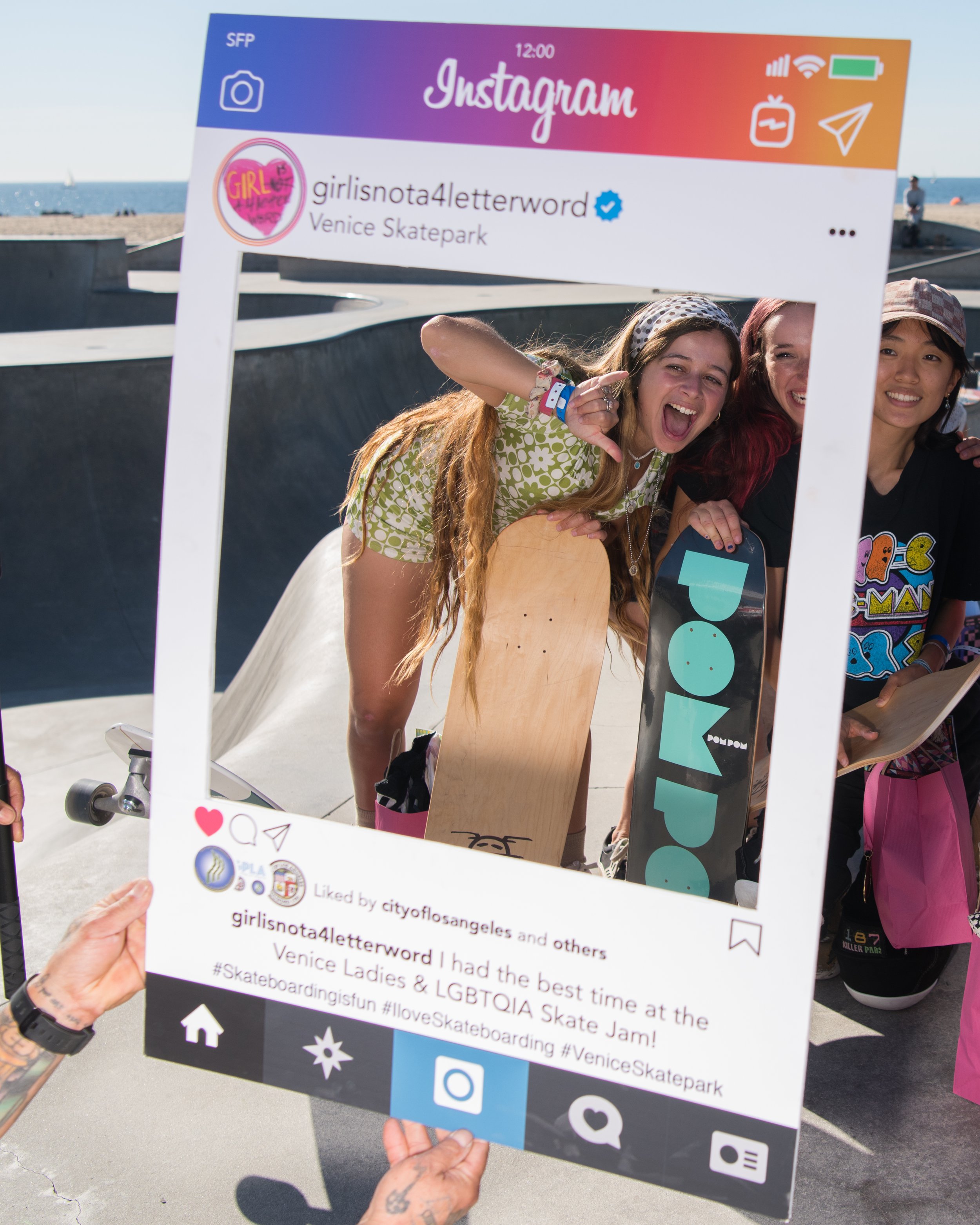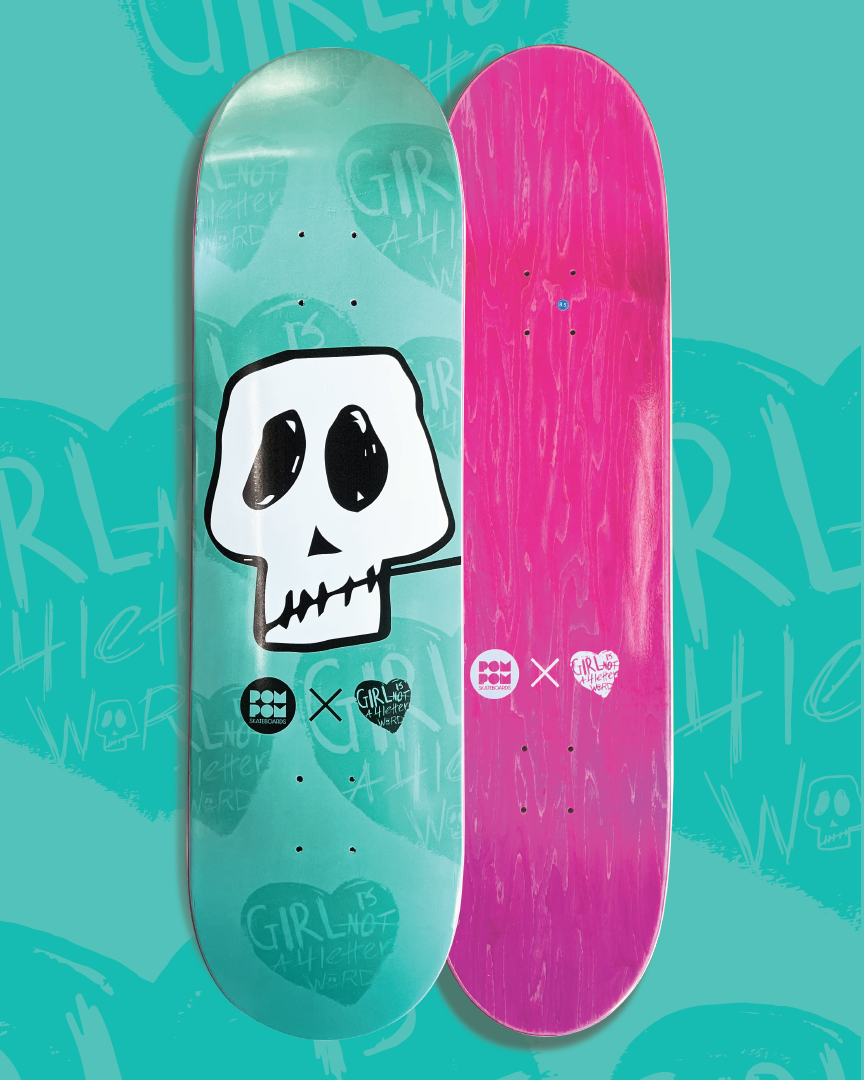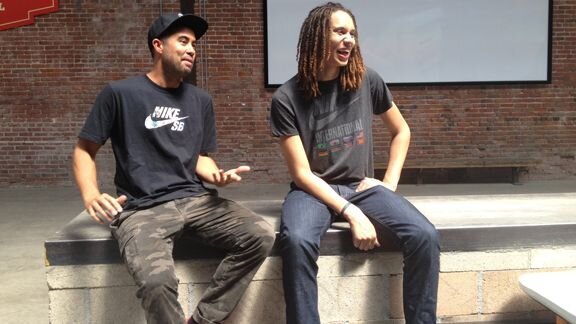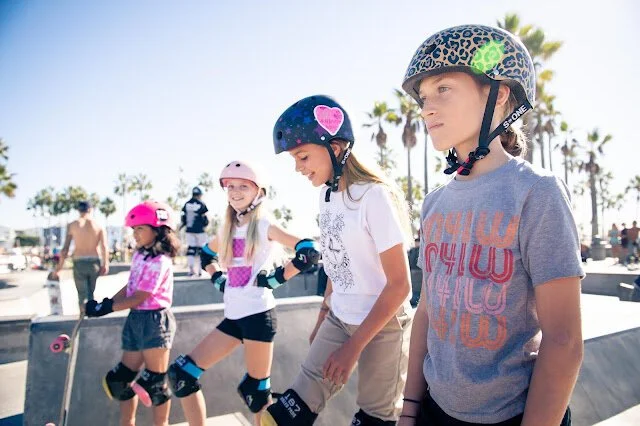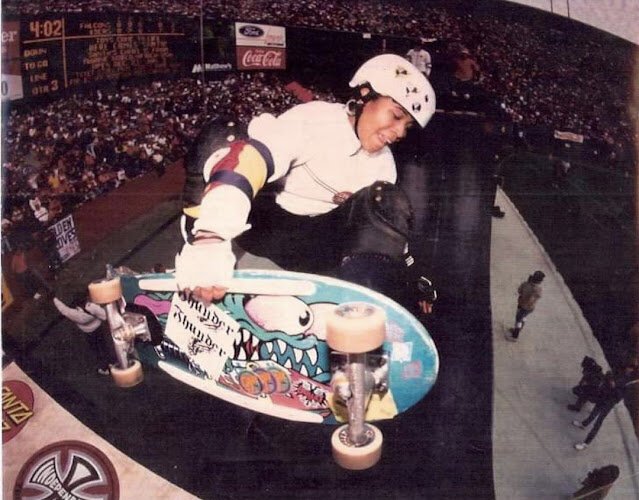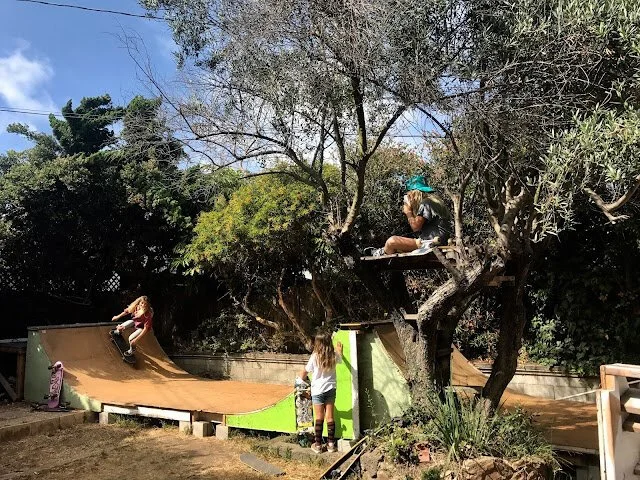Stephanie in Fallbrook late'80s ~ Photo Mark Waters
Stephanie: I think during your era, it was like, a lot of parks closed of insurance problems.
And after that, I believe that women really, just in general, had a hard time.
Back then, I think when I was around, guys would try to pit me against Cara-Beth and Lori all the time, just because we were the only females. I don’t like that feeling. It gives me a rash.
Cindy: Yes, Judi and I have always been on the same page with that – bringing girls up with you is what we should all be doing. Unfortunately, some don’t feel that there is enough of the pie to go around, and that creates an insular situation – which no one benefits from in the long run.
Cindy: I read that in 1988 you turned pro. Is that correct?
Stephanie: Yes, but it wasn’t like that was the year I turned pro. You really didn’t have a choice – there were no amateur competitions in Europe where I was skating, so you had to compete in the pro divisions.
Cindy: It’s interesting to hear this and discuss it because nowadays, people feel that being pro means you have a pro model board. Girls didn’t have that back in the day – in freestyle days, yes – but only a couple girls had those pro models, but not during the vert days in the late ’70s and ’80s. During my era, you turned pro by going to a contest, entering the women’s pro division, and then you couldn’t go back to AM.
Stephanie: There were no amateur contests, no girls divisions in Europe. You just skated. A lot of the Americans were coming over to Europe to skate. So first I went over there to visit, then I moved there. I was skating with Tony Hawk and skating in the Pro Series. I lived there for 16 years.
The story behind that is so crazy because there was a picture of me doing a Frontside Air on an L-shaped ramp at a waterslide park which ran in the San Jose Mercury newspaper. I had Santa Cruz wheels in it – Richard Novak put it on the office wall there. Soon after, he asked for the team’s ideas and insights for a new video, and I was the only one who sent a page of ideas in. Later I approached Richard with a plan for me and Jeff Hedges, another AM, to go to Europe, promote the brand, hand out stickers, meet with shops, etc. Jeff said, “he will never pay for us to go to Europe,” but after hearing my pitch, Richard pulled out his Rolodex and started going through it and asked when we wanted to go and when do you want to come back – I’m green lighting this for you guys to go.
When we got back, I found out that the guys were complaining about me – they were saying I slept with everyone in Europe, which was not true because I was a virgin until I was 24 years old. I was getting too much attention, and there was jealousy, and I was asked to leave the team. I was about 20 years old at this point. I felt like had I been a guy, none of this would have been a problem.
This got me to Death Box, which back then was a small company in Europe, which ended up turning into Flip with Jeremy Fox. They asked me to ride for them, so it ended up being in my favor that I got off Santa Cruz and rode for them.
Cindy: What age were you when you first started with Santa Cruz?
Stephanie: I think I was like 19 years old then. I went to Europe at age twenty and stayed there for sixteen years. I came back when I was about thirty-five. My family kind of fell apart here in California, so I didn’t know where to go. So I thought I’ll just stay in Europe and live the life. And I did. I toured for five years, all over while I was there.
Cindy: As I remember, that was a point in time for skateboarding that while parks were closing here and people were turning to street. Things in Europe were still happening with vert because they were still embracing what we thought we had lost.
